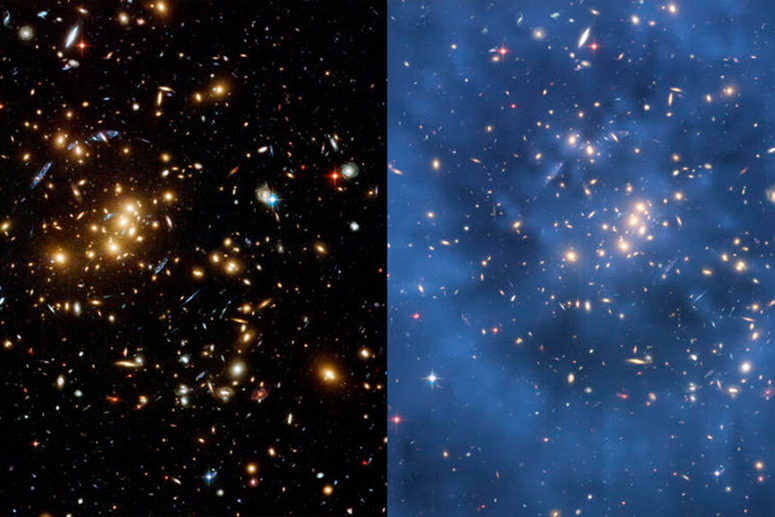Dark matter may create new dark matter from ordinary matter

We still don't know a lot about dark matter, that mysterious invisible mass that may make up up to 85% of everything around us, but a new study outlines a rather unusual theory about how this stuff is created.
Dark matter creates more dark matter. The idea is that dark matter particles in the early universe were able to create more of themselves than regular matter particles, which explains why there are so many of them now.
The new research builds on previous proposals about a “thermal bath,” in which ordinary matter, in the form of plasma, produces dark matter fragments. These are the elementary particles that may then have had the ability to convert the thermal bath particles into more dark matter, the international team of physicists led by Torsten Bringman of the University of Oslo in Norway wrote in their newly published paper: “This leads to an accelerated growth in the number density of dark matter, in "Close resemblance to other known exponential growth processes in nature."

There are some questions to be answered about this new hypothesis, like everything related to dark matter, but more importantly, it fits with the dark matter observations we have today thanks to the cosmic microwave background. Since we cannot see dark matter directly, the behavior of the universe - Combined with electromagnetic radiation, which makes up the cosmic microwave background radiation, it strongly suggests that dark matter exists somewhere in very huge quantities.
Several scenarios attempt to explain the conditions that might constrain the proportions of dark matter we see, and one such scenario, called the internal freezing scenario, suggests that nothing eliminated dark matter, regardless of how it appeared in the thermal bath of early plasma. The gradual generation of the universe simply stopped as it expanded, locking up a certain amount forever.
In contrast, the external freezing model suggests that dark matter emerged at the same speed as regular matter, but reached equilibrium as soon as antiparticles canceled out some of it. The coldness of the expanding universe froze its generation again, , but it also froze his ability to quickly annihilate, leaving a specific amount.

This new study suggests another possibility, although this is true: This means that the amount of dark matter grew rapidly during the expansion of the universe, with this growth slowing and eventually stopping as the expansion of the universe slowed. This dark matter production line has been halted due to the increasing divergence between normal matter and dark matter over time. The researchers said there should be evidence somewhere in the cosmic microwave background radiation that supports this theory. So, the next task is to find him.
Researchers may not have to wait long before learning more about a new approach to understanding dark matter production, thanks to highly sensitive dark matter detectors monitoring the universe that will teach us more about the universe's creation and growth.
“Our mechanism complements the thermal production scenarios for both internal freezing and external freezing in general, so exploring this new method of producing dark matter from a convection bath seems well warranted,” the researchers wrote.
Source: websites

